Wadi Feiran
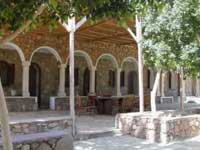 |
|
Seven Girls' Monastery |
"And all the congregation of the children of Israel
journeyed from the wilderness of Sin, after their journeying,
according to the commandment of the Lord, and pitched in Rephidim...Then
came Amalek and fought with Israel in Rephidim" (Exodus, 17:1,8)
The biblical Rephidim is today's Feiran (Firan, Faran,
Pharan) Oasis in the Sinai. The Greek Seven Girls' Monastery
(it may be referred to as the Monastery of Moses, the Monastery
of Feiran, the Seven Sisters Monastery, the Monastery of the
Seven Nuns or even Dir Za'ir Monastery) is located on a spring
in the middle of the oasis where it is thought that Joshua
defeated the Amalekites while Moses and Aaron gave prayerful
support. Many visitors to Egypt who go on to the Sinai will
visit the convent on their way to or coming from St. Catherine's
Monastery. Today, the Seven Girl's Monastery falls under the
authority of St. Catherine's Monastery.
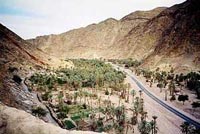 |
| Wadi Feiran |
Old paths lead to the top of Jabel Tehuna which overlooks
the wadi, and passes through the remains of ancient graves
and buildings, including two Byzantine churches. It is from
this mountain that Moses supposedly observed the battle with
the Amelecites.
The Wadi Feiran is a beautiful four kilometer area surrounded by palms, vines and trees and is the Southern Sinai's largest oasis, often called the "Pearl of the Sinai". A little of everything is cultivated here, from corn to barley, wheat to tamarisks, but the main harvest is still dates.
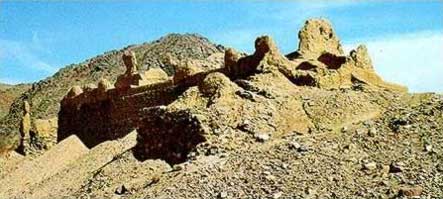 |
| Old Pharan
Archbishopric |
The Oasis is also one of the first Christian centers
in the Sinai. This was once the seat of the archbishop of Sinai
(from the 4th through the 6th century) and the ruins of the
archbishopric can be seen near the convent. The convent itself
was established in the fourth century, but the oasis Christian
community is mentioned as far back as the second century and
there are references to early Anchorites (the predecessors of
monks) here as early as 365 AD.
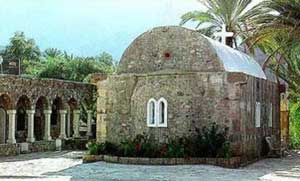 |
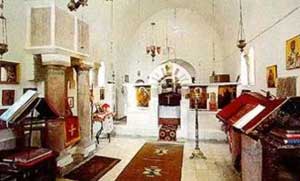 |
| Exterior and Interior of the Church of the Prophet Moses |
Near the Oasis is also, according to legend as well
as locals and some scholars, the rock that Moses struck with
his staff to bring forth a spring so his people could drink.
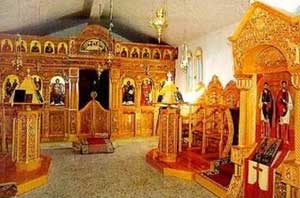 |
| Church of St. Cosmas |